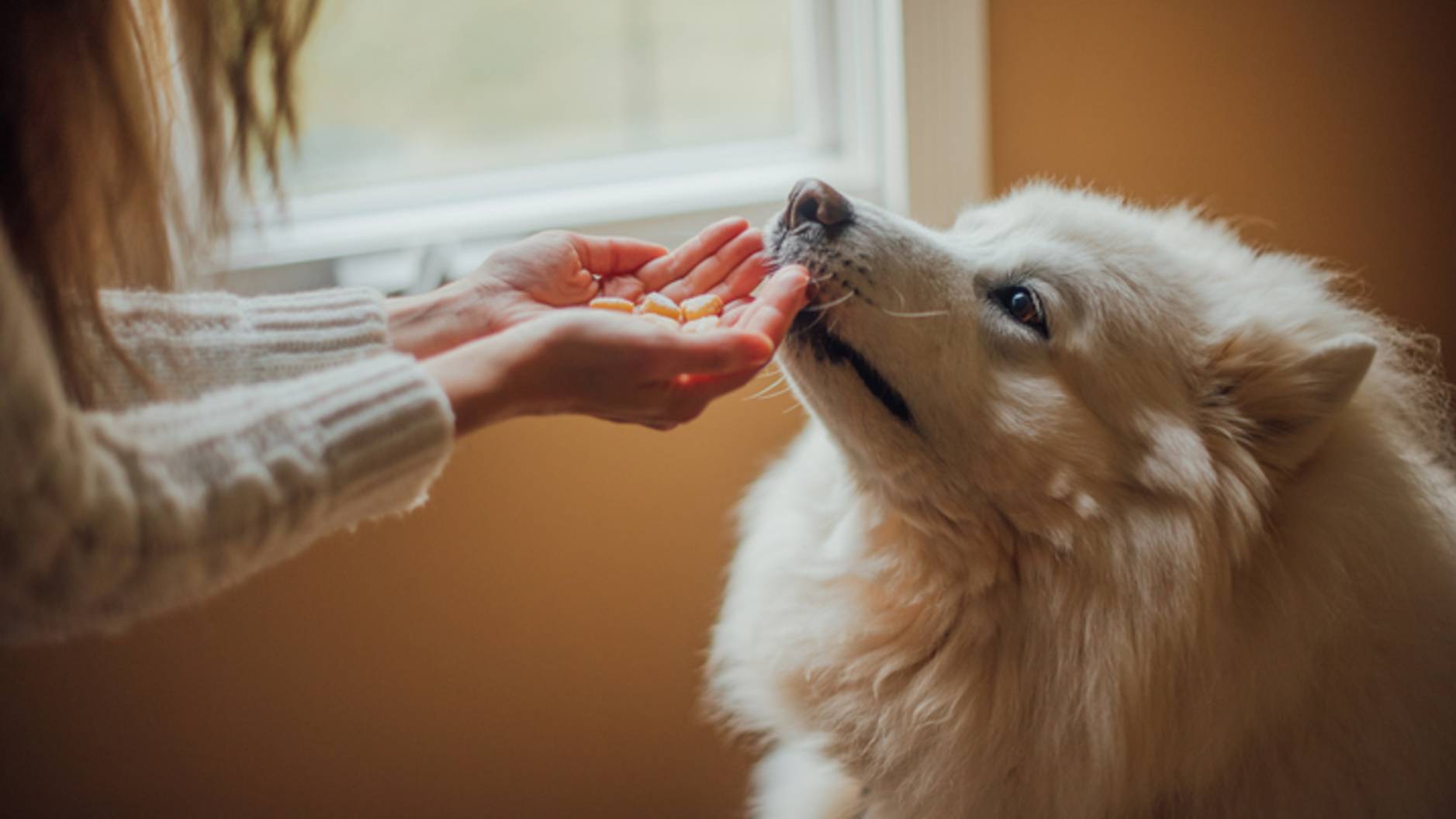How to train your dog to sleep in a dog bed (and get yours back!)
If your pooch prefers to sleep in your bed rather than theirs, these tips will help them enjoy their own, cosy crash pad.

Knowing how to train your dog to sleep in a dog bed can be an essential skill for canine owners. After all, there's nothing quite like being woken up by a humungous hound snoring in your face!
Just like their owners, our canine companions need a good night’s sleep to stay healthy and well rested. But even with the best dog bed in your home, it can be challenging when your pooch prefers to kip on your bed or sofa instead.
Of course, there's nothing entirely wrong with letting a dog sleep in bed with you, but if you're the type of pet owner looking to keep dogs off the couch and furniture, then you may need a little extra help in this department, especially when the more your dog gets used to sleeping there, the harder it will be to move them out!
While getting them to leave the warmth and comfort of your bed may be tricky at first, have no fear. With training, consistency and a lot of patience, it can be done. Here are some useful tips on how to train your pup to relax in their own perfect pad so that everyone can get a good night’s kip.
Train in a room that’s not your bedroom
Before you begin training, it’s advisable to work in another room other than your bedroom, and not during night time. Place your pup’s chosen bed or crate in another room such as the living room or guest room. This will help to ease your dog into her new bed gradually, without her automatically jumping into your bed.
Invest in a comfortable dog bed
Investing in a good bed is important to ensure your pooch gets the perfect slumber. Consider the size, design, materials and how accommodating the bed will be for your canine to stretch out in. Remember your pooch sleeps for 12-14 hours a day so the right dog bed is essential for their health and wellbeing.
From memory foam beds to water resistant ones, there are plenty of options for pups and their sleeping positions. For senior dogs or those with joint problems, the best orthopedic dog beds are ideal. While if your pooch is on the larger side, it’s advisable to purchase one of the best large dog bed for more comfort. If your pooch likes to wander around at night and disturb the household, then one of the best dog crates may be suitable.
Get the best advice, tips and top tech for your beloved Pets

Throw in some familiar items
You want to create a familiar and cosy space for your pooch to retreat to. Add their favorite blanket or their preferred toys inside it, to make his bed feel more inviting to sleep in. It’s also advisable to rub your hands over the dog bed so it carries your familiar scent.
Establish basic ‘bed’ commands
Have a chosen ‘go to bed’ command to direct them into their own bed. This could be as simple as, ‘go to bed’, ‘down’ or ‘bed’, but it needs to be used consistently throughout the process. Once your dog associates the ‘go to bed’ command with their new bed, they will gradually go to their bed from anywhere in the house without any coaxing. The next step is to encourage them to lie down with your ‘down-stay’ command and stay in place.
It’s advisable to practice this training in different areas of your home to get your pooch used to looking for the bed.
In addition, if your bed is strictly off-limits, there is no harm in placing their bed next to yours at first. This way, you can stroke, encourage and be reassuring if they are anxious. Gradually, your dog will become comfortable with the idea of their own bed!

Reward them for good behavior
Positive reinforcement and rewards are always a great motivator when you first start training. Once your pooch is getting into bed with or without your direction, reward them with one of the best dog treats. Alternatively, you can reward them with the best dental chews, which are more longer lasting, and great for healthy teeth. Show them love and affectionate which will encourage them more. Just remember to gradually stop giving treats in the long-run, as they will expect one every time they do to bed!
Stagger training times
It’s advisable to stagger short training slots throughout the day, rather than all in one time. Brief sessions will be more upbeat and less tiring, making it a more pleasurable experience for your pup. Remember there is no timescale for training your dog into their own bed, and it can take anywhere from a few days to a few months. But with repetition, encouragement and plenty of affection, they will soon be snoozing happily in their own bed!
Cynthia Lawrence is freelance lifestyle journalist. Starting off her career in national magazines, she moved to digital and e-commerce publications. When she's not reviewing exciting products, she is obsessed with home interiors and her neighbour's cat!

